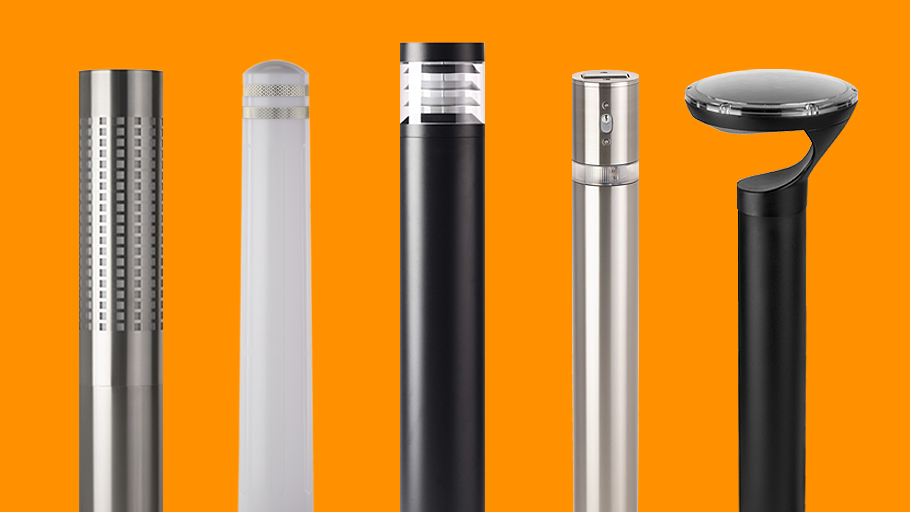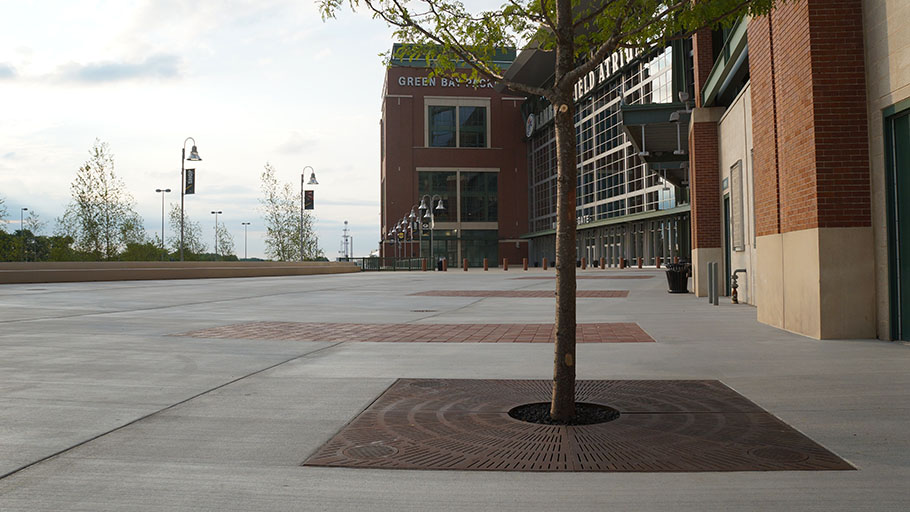A comparison of removable receiver and mount options
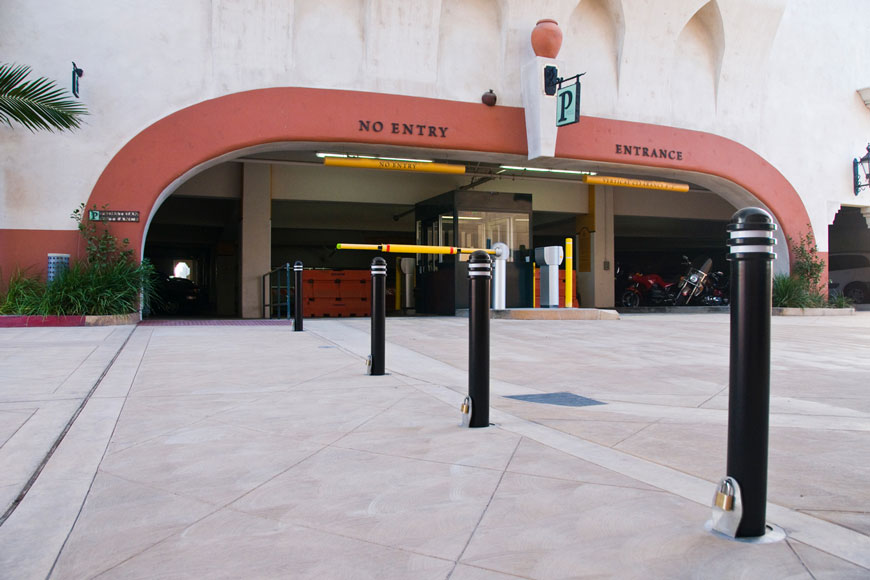
Bollards are versatile applications used for security and demarcation. Bollards encourage safer spaces by protecting people and infrastructure from vehicle intrusion, but they can also be used more casually as visual guides or boundary markers. Indoors or out, they protect and guide users of the area.
A wide variety of bollard sizes and colors exist, increasing their visual profiles. Bollard designs are plentiful too. Interesting designs provide an aesthetic focal point while bollards fulfill their functional duties. Cast bollards are often matched with more traditional architecture, while stainless steel bollards complement the modern and contemporary.
Removable receivers for changing access needs
When it comes to installation, it may be common knowledge that bollards can be installed permanently as fixed applications. However, fixed bollards do not work well in places with variable access-control needs. In these areas, bollards must have the ability to go back and forth between being installed and removed. When installed, bollards will guide traffic or prohibit entry of unauthorized vehicles. When removed, they leave an open, vehicle-accessible space. Emergency, service, and delivery vehicles are then able to access the area. Removable bollards are often seen in parking lots, event spaces, and commercial lanes.
Bollards can be made removable with various mounting hardware. One of the most common installation methods is using in-ground receivers. They are designed to accept or release bollards with ease. Removable bollard receivers typically come with padlocks, while others have internal locking hardware. Although they all work to make bollards removable, understanding the advantages of each receiver is important before deciding on the best receiver for your needs.
Receiver with lid
Receivers with lids are known for their simple and effective design. The bollard slides into the receiver, and is retained by the receiver lid that is padlocked to a stud on the side of the bollard. The lid also acts as a cover for the receiver when the bollard is removed. This is the only receiver style that has a built-in cover that works to minimize tripping hazards.
Receivers with lids are ideal for situations where bollards will be removed regularly, such as to allow for the passage of daily service vehicles. When the bollard is removed from the receiver, the built-in cover of the receiver can be closed. This prevents the receiver from being exposed. The cover falls flush to the ground, preventing any obstruction to pedestrian traffic.
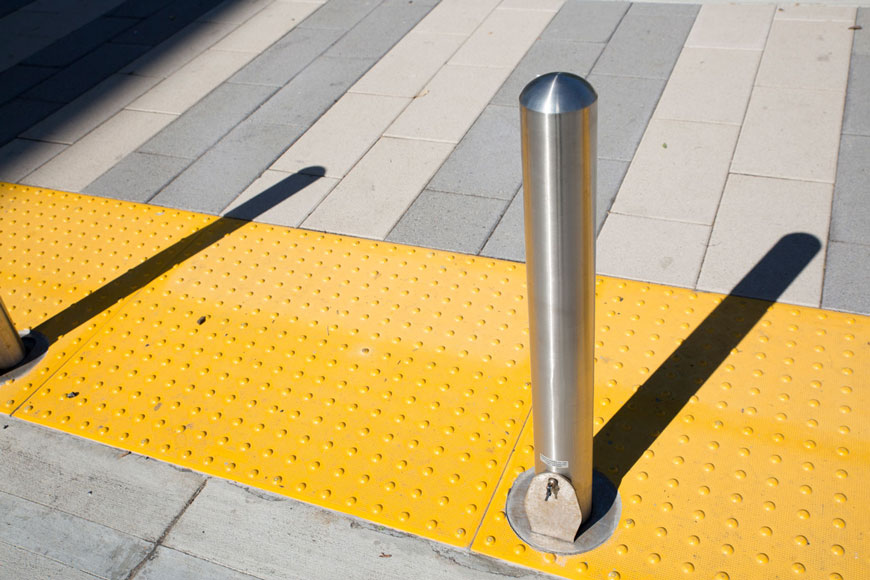
Receiver with chain
Receivers with chains are the most economical option. They work best in environments where the bollard does not need to be removed too often. Once the bollard is set into the receiver, the receiver’s chain is lifted up to the stud on the side of the bollard and padlocked securely. These removable bollards could work well at the entrance of a park, where service vehicles only require access once a month for landscaping. When access is required, bollards can be removed temporarily. When the job is done, they can be placed into position again.
There is no built-in cover for this receiver, so a separate mounting cover may be used when the bollard will be removed for an extended period of time. The cover works to conceal the empty bollard receiver and prevents dust and debris from entering. It also helps reduce tripping and obstruction.
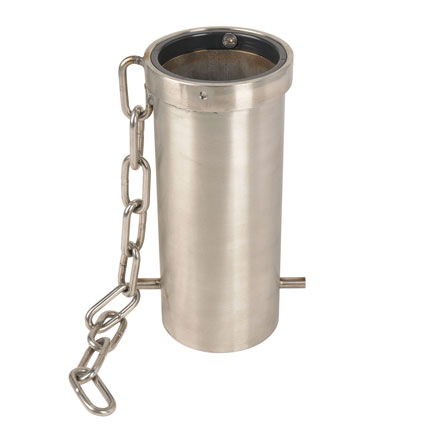
Crash-rated receivers
Crash-rated bollards, which are engineered and tested to withstand crash impact, are available in removable models. The below-grade receivers for these anti-ram bollards are deep embedded in concrete and are an integral part of the crash rating. The above-grade part of the bollard is heavy, and generally must be removed with a winch.
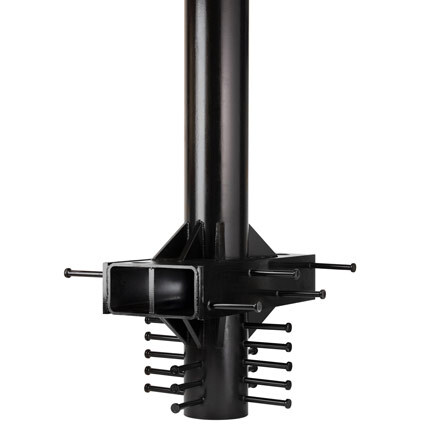
Receiver with internal locking hardware
Bollards with internal locking hardware, such as R-8464 removable bollards, have shallower receivers than other removable mounting styles. They are ideal for installation sites that do not have much ground depth. This includes suspended slab construction sites (multi-level parking garages), and areas with high-voltage wires running underground. When digging deep poses a safety hazard, consider installing a receiver with internal locking hardware. These do not require deep embedment to function properly.
This receiver has no loose parts and does not require a padlock. The locking hardware is attached to the bollard itself, and the receiver just accepts it. Simply insert and turn the key to retract the plunger and lower the bollard into the receiver. Once the bollard is set, release and remove the key. This receiver is a fast way to make bollards removable in one step.
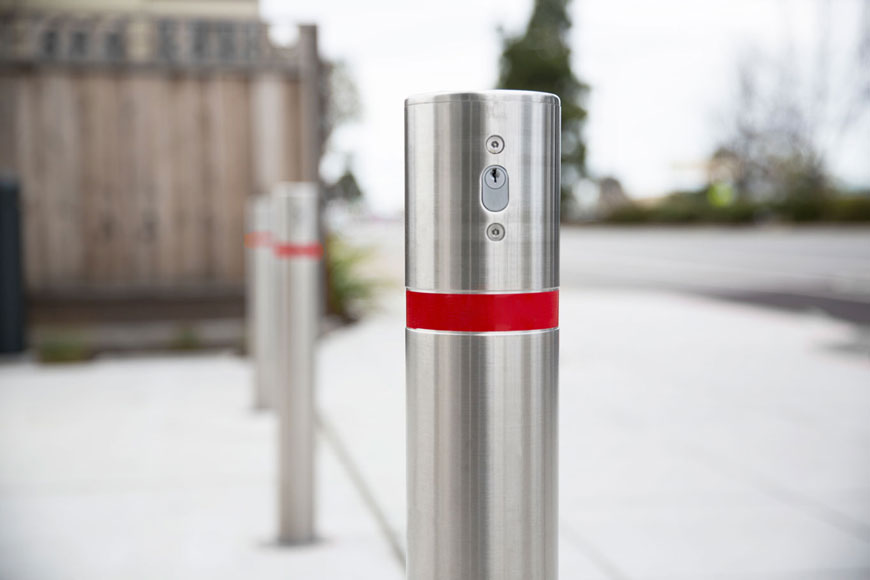
Slide-in receiver
Another option for shallow mount removable bollards is the simple slide-in receiver, available with the R-790X and R-890X flanged models: R-7901, R-7902, R-8901, R-8902, and R-8907. Slide-in mounts are installed easily and have a very minimal impact to the site. These mounts include a disc that mounts to the bollard, which allows the installer to set the bollard over a locking loop in the receiver. A padlock secures the bollard.
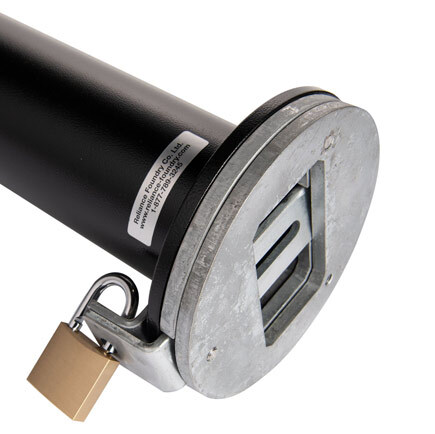
Flexible bollard receivers
Our tough, substantial flexible bollards are installed along bike lanes, in parking lots, and near loading bays and docks. Because they are thicker and more robust than standard traffic delimiters, drivers are reluctant to sideswipe them. If hit, they make a resonant noise against the car body to alert the driver, without doing damage.
However, these flexible bollards can be driven over by authorized or emergency vehicles. They are tested to maintain integrity for 500 hits. If they’re installed to be driven over, as in ambulance bays and loading docks, our removable receivers make it easy to replace them at the end of their service life.
Above-ground mounts
Removable decorative bollards come in a variety of base diameters, often flanged or built with architectural elements that means they cannot slide easily into a below ground receiver. These bollards are still removable using bollard mounts. In these systems, the bollard fits over the mount, rather than into the receiver.
Some mounts, like our premium version, are installed into the substrate. These are lifted and locked into place, and the decorative bollard placed over and secured with a padlock.
Our economy mount can be either installed in fresh concrete or bolted into place. Decorative bollards are locked over the mount with a pin and padlock.
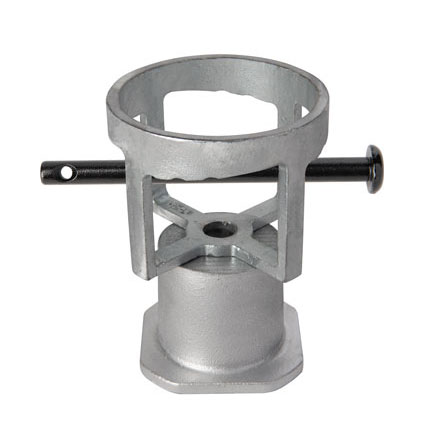
Removable receivers for durable, long-term use
Receivers are made to withstand the wear that comes with outdoor environments. They are typically made from galvanized steel or stainless steel. Galvanized steel receivers are the more economical option, while still offering anti-corrosion properties since galvanized steel is coated with zinc. Stainless steel receivers are suitable for harsher environments. It has a stable passivation layer from the chromium inside the metal. Even if the stainless steel receiver is scratched, the passivation layer will self-heal, protecting the receiver from corrosion.
Removable receivers transform bollards into resourceful applications that can grant or restrict access as needed. As access needs diversify in urban environments, removable bollards make the temporary installment of barriers possible, creating more fluid, adaptable spaces.

